In personal injury law, damages are pretty straightforward — until it isn’t. You may have heard about compensatory damages, which are designed to make an injured party “whole” again by covering medical bills, lost wages, and pain and suffering.

But what about punitive damages? These aren’t about compensation; they’re about punishment and sending a strong message. This article will unearth the intriguing world of punitive damages, explaining when and why they’re awarded and how they can impact personal injury cases.
What Are Punitive Damages?
Punitive damages are a legal wild card. Unlike compensatory damages, which aim to cover the actual costs incurred by an injury, punitive damages are intended to punish the wrongdoer and deter similar future conduct. Think of them as the legal system’s way of saying, “Not cool, don’t do it again.”
They’re not awarded in every case — far from it. They typically come into play when the defendant’s behavior is particularly egregious, reckless, or malicious.
If compensatory damages are the bread and butter of personal injury law, punitive damages are the spicy hot sauce. They add a kick, serving as both a penalty for the offender and a warning to others.
When Are Punitive Damages Awarded?
Generally, punitive damages are awarded in cases where the defendant’s actions go beyond mere negligence and enter the realm of intentional harm or gross negligence. Picture a drunk driver who causes a serious accident or a company that knowingly sells a dangerously defective product. In these scenarios, compensatory damages might cover the victim’s losses, but punitive damages are there to underscore the severity of the wrongdoing.
Another example might be a construction accident. While workers’ compensation typically covers these incidents, punitive damages might be involved in some situations.
Case Study: Construction Accidents
Construction sites are inherently risky, and accidents can and do happen. However, not every accident leads to punitive damages. Workers’ compensation usually steps in to cover injuries, medical expenses, and lost wages.
This system is designed to provide swift support without lengthy legal battles. But what happens when a construction accident results from a blatant disregard for safety?
Here’s where things get interesting. Suppose a construction company has a history of cutting corners — ignoring safety protocols, failing to maintain equipment, or pushing workers to operate under hazardous conditions. If an accident occurs under such circumstances, the injured party might have grounds for a personal injury lawsuit seeking punitive damages in addition to workers’ comp.
For more information on how to get the compensation you deserve, consider consulting a New York construction accident attorney. They can determine whether your case warrants punitive damages and guide you through the legal maze.
What Is the Process of Seeking Punitive Damages Like?
Seeking punitive damages is no walk in the park. It involves a rigorous legal process that requires clear and convincing evidence of the defendant’s malicious intent or gross negligence.
The journey begins with the plaintiff’s attorney filing a complaint, including a punitive damages claim. From there, both sides enter the discovery phase, gathering evidence to build their cases. For punitive damages, this means demonstrating the defendant’s egregious behavior.
Next, the case proceeds to trial, where the plaintiff must prove, often to a higher standard than regular damages, that the defendant’s actions were willful, malicious, or recklessly indifferent to the rights of others. If the jury finds the evidence compelling, they can award punitive and compensatory damages.
It’s important to note that the legal threshold for punitive damages is intentionally high. This ensures that they’re reserved for truly exceptional cases. Therefore, having an experienced attorney is crucial to conquering this challenging terrain.
What Are Challenges in Awarding Punitive Damages?
Awarding punitive damages is not without its hurdles. Various legal and procedural challenges can arise, making it a complicated aspect of personal injury law. One significant challenge is the burden of proof, as plaintiffs must meet a higher standard to show the defendant’s conduct was especially harmful.
Additionally, laws regarding punitive damages can vary significantly from one state to another, meaning what’s permissible in one jurisdiction might be prohibited in another. Furthermore, some states have imposed caps on the amount of punitive damages that can be awarded, limiting the financial impact.
Despite these challenges, punitive damages are vital to the justice system. They underscore the importance of holding wrongdoers accountable and protecting public welfare.
The Power and Purpose of Punitive Damages
Punitive damages are a fascinating and crucial component of personal injury law. They go beyond merely compensating victims and step into punishment and deterrence. By understanding when and why these damages are awarded, individuals can better understand their legal options and seek justice in cases of egregious wrongdoing.
Whether you’re dealing with a reckless corporation or a grossly negligent individual, the potential for punitive damages is a powerful reminder that some actions have consequences far beyond simple compensation. If you are entangled in a complicated legal situation, don’t hesitate to seek professional advice.

